Swedish company NoviOcean has tested a third-gen prototype of its combination wind/solar/wave energy platform, a floating platform rated for up to 1 megawatt of consistent clean energy around the clock thanks to a fascinating buoyancy-driven mechanism. Next step: a full-scale pilot.
This renewable energy platform will have a relatively small footprint once built at full size: 38 x 9 m (125 x 30 ft), the platform itself extending some 4 m (13 ft) above the water surface, and a further 12 m (39 ft) down below. Tiny, then, in comparison to some of the monstrous offshore wind turbines we're starting to see, like the colossal 20-MW MingYang turbine that's currently the world's largest.
But it's designed to punch above its 140-ton weight, and deliver energy more consistently than any single-method generator.
How does it work?
When the Sun's shining, it powers some 700 square meters (7,535 sq ft), or 50 kW worth of solar panels. When the wind's blowing – and most of the world's best wind resources are offshore where this thing will live – it'll drive a series of six helical-bladed, vertical-axis wind turbines (VAWT). And it'll also harvest up to 650 kW of energy from the motion of the ocean, thanks to an interesting wave power system.
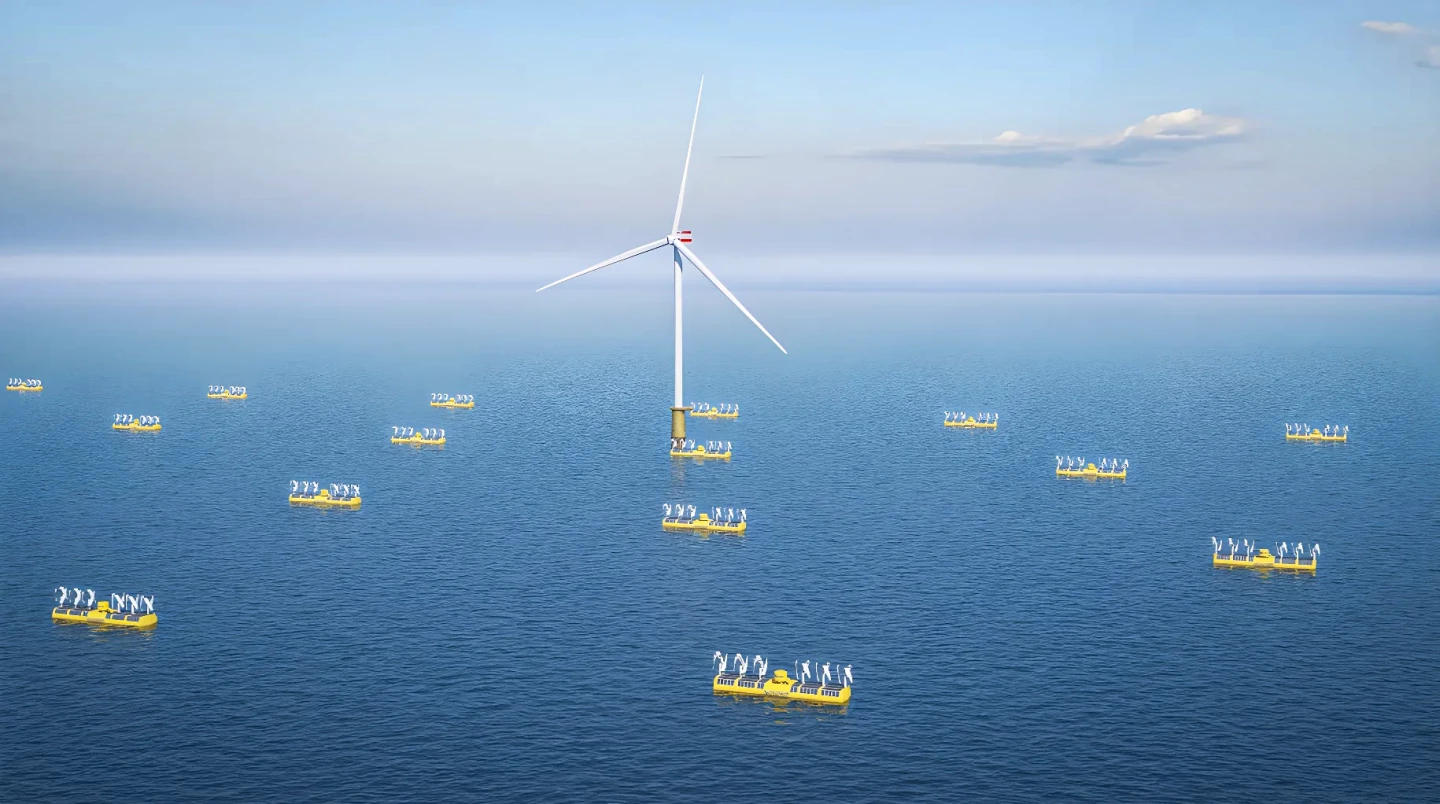
First, though, about those VAWTs. Compared to the pinwheel-style horizontal-axis turbines we're used to seeing, VAWTs have a couple of key advantages, particularly in an offshore wind application. For starters, the heavy generator bit is at the bottom, as opposed to at the top of a gigantic pole that also needs to support a huge spinning fan. So this platform will stay upright by itself, without the need for counterbalances or heavy support structures.
Secondly, they can accept wind from any direction, since they're spinning 360 degrees anyway. So the platform can be oriented parallel with the waves, to best serve its major power producer.
The wave energy generator works in an interesting way, too. The big pluggy-looking thing sticking out of the top is a turbine/generator system, sitting on top of a great big piston. The top of this piston is fixed to the floating platform, and the bottom to the ocean floor.
In between waves, the platform floats downward, and at the bottom of its travel, a valve closes to hold the platform down as the next wave starts to rise. As it does, up to 3 m (10 ft) of this giant float is held underwater, trapping some 600 cubic meters (21,200 cu ft) of air underwater, which desperately wants to rise upward.
At an optimal point, the valve opens, and that buoyancy is unleashed to create up to an enormous 600 tons of lifting force on the float. This force pulls water up through a penstock as the float rises, and fires it through the Pelton-style generator turbine at the top at high speed to create up to 650 kW of instantaneous clean energy. According to NoviOcean, it'll only need 4 m (13 ft) high waves to achieve its peak output.
With the float built, the solar and wind systems more or less get a free ride. "Normally, floating solar, you have to build the structure, have the systems on board, and the cable," NoviOcean CO and Founder Jan Skoldhammer told an audience at the Marine Energy Alliance Talks at OEEC 2022. "Well, we have the structure, and we have the cable and the systems on board, so why not use it?"
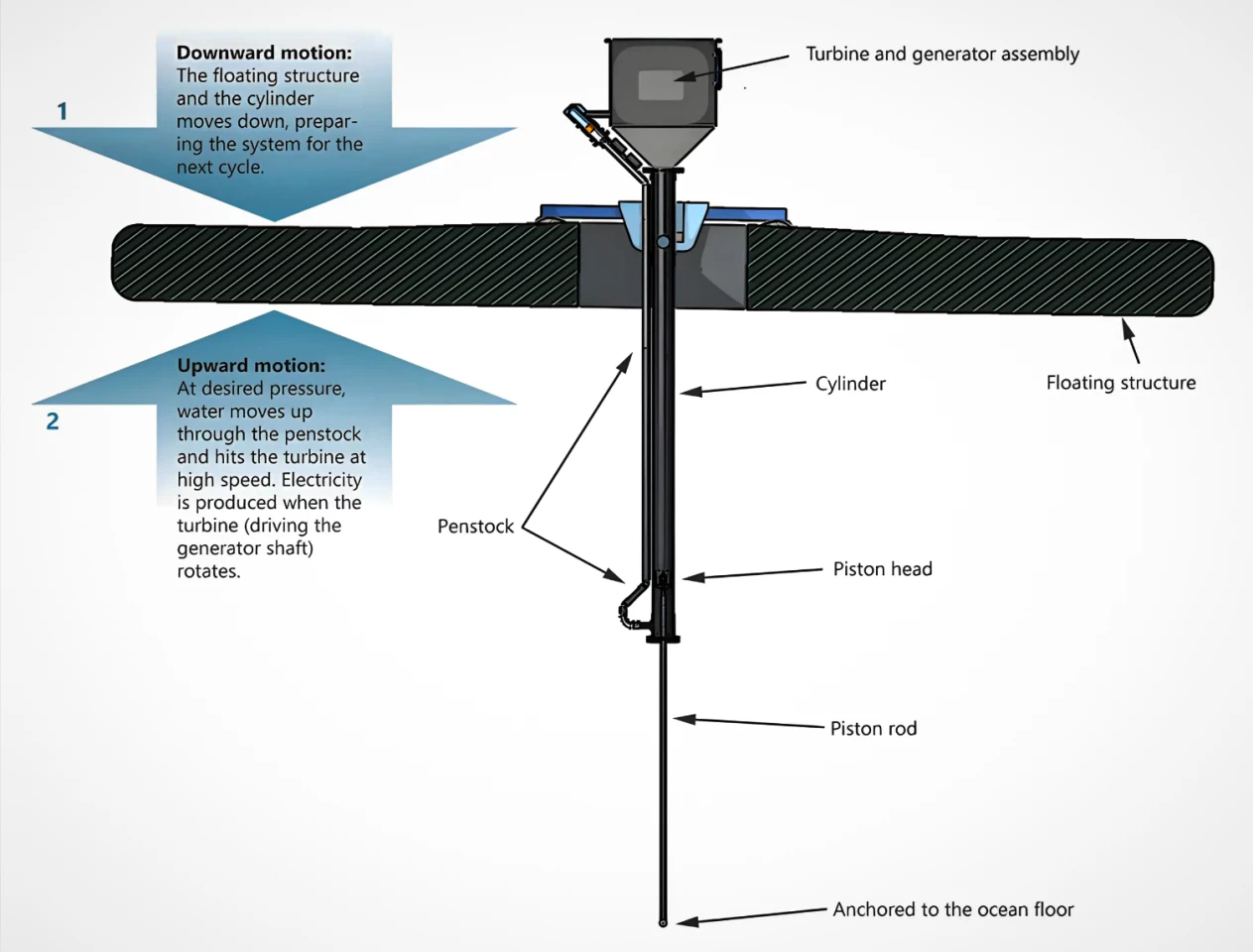
What's the promise here?
NoviOcean says a full-size platform should operate 24/7 at a capacity factor between 40-70%, each unit generating an average of around 3.5 gigawatt-hours annually. To put that in context, the average US home used 10,791 kWh of electricity in 2022, according to the US Energy Information Administration – so each platform should generate enough to run about 324 homes.
The build, installation and maintenance of these things should be a trivial exercise compared with the histrionics involved in massive offshore turbines, and they're designed to be deployed in grids, which will be visually unobtrusive, and can be bunched closer together than larger turbines, since they'll leave less of a wake in the air currents that flow through their VAWTs.
How far along is this project?
NoviOcean has built three prototypes to date, at 1/7th, 1/6th and 1/5th scale respectively. The latter has spent 24 months in a test rig, 6 weeks in a wave tank, and 14 months installed offshore, where the company says it's performed exactly as simulations predicted.
The next step is a full-size pilot rig, which the company hopes to have built and in the water by 2026-27, followed by a "pre-commercial array," sometime between 2028-30, and a full commercial deployment by 2031-32.
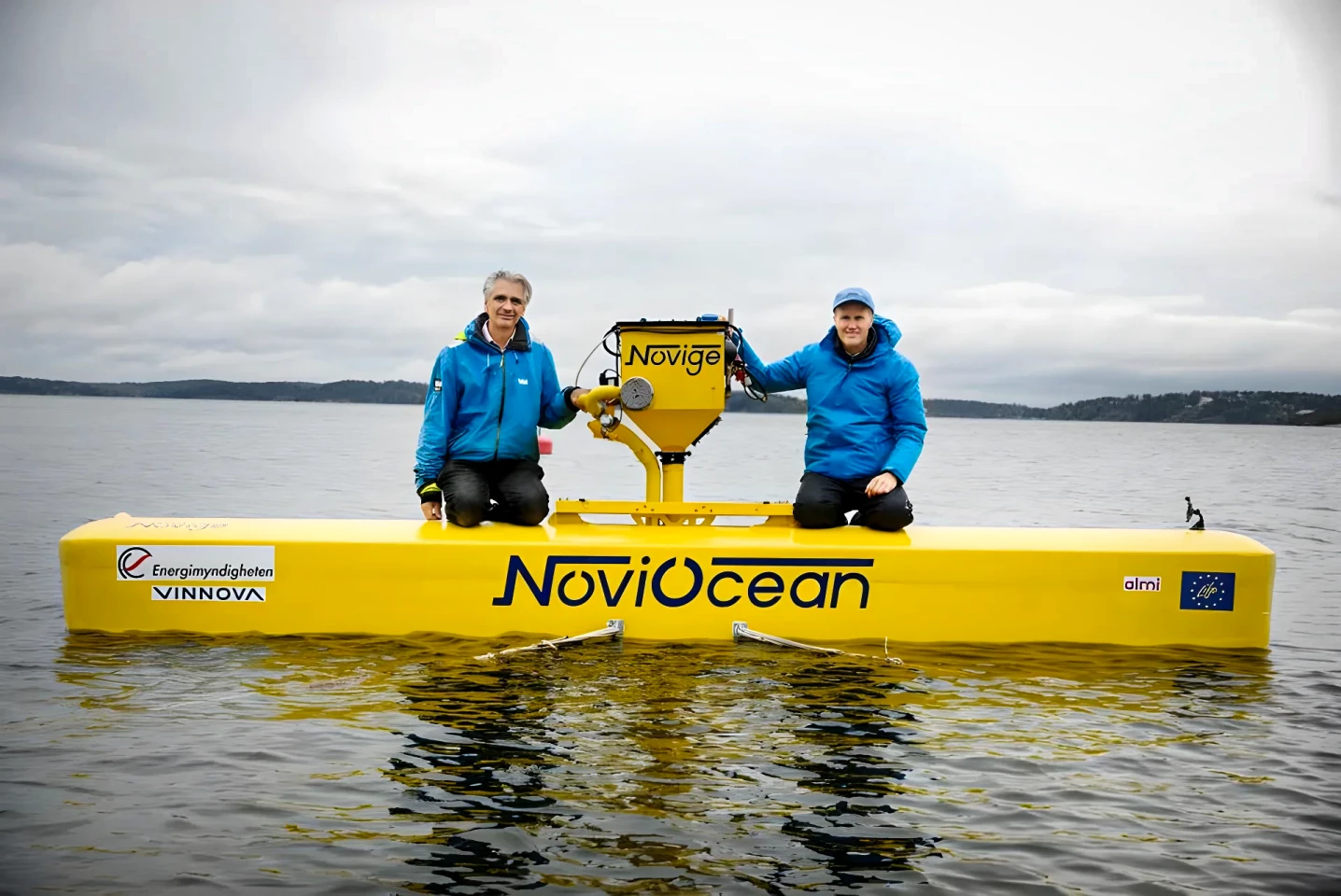
What's the "but?"
All renewable energy inventions must eventually be judged in terms of the all-important Levelized Cost of Energy (LCoE) – or how much they'll be able to sell clean energy into a grid for, with everything from up-front build and installation costs, to ongoing maintenance, personnel, deprecation and finance costs factored in across the life of the project.
NoviOcean says it expects its first full-sized 1-MW hybrid platform to cost €3.6 million (US$4 million) to build, and its 100th to benefit from economies of scale to come out around €2 million (US$2.2 million).
This contributes to an initial LCoE of US$275/MWh at debut, which NoviOcean points out is around a third of where wind and solar started at, back in the day. But that's certainly not where wind or solar are now; according to IRENA's 2022 figures, onshore wind cost US$33/MWh, utility-scale solar around US$49/MWh, and even offshore wind was managing to send power back to land at US$81/MWh.
By the time 100 units are deployed, NoviOcean is targeting an LCoE closer to US$110, and the company says it sees a path to US$77 somewhere well beyond that.
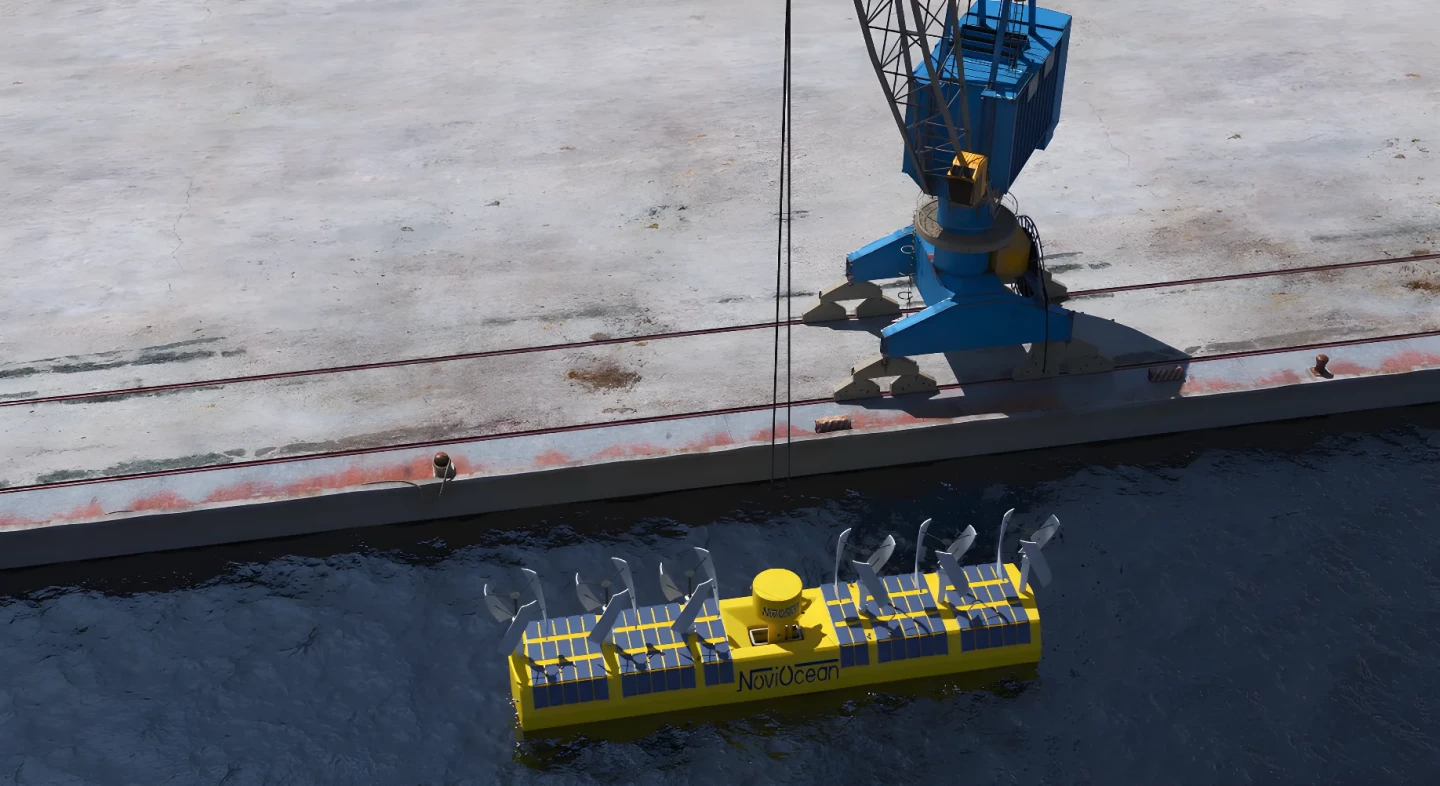
Mind you, LCoE might not tell the whole story here, since the platform's multiple modes of energy generation could well put it in a position to sell energy in expensive peak periods when one renewable source or another isn't pulling its weight for the grid.
Still, it'll struggle to compete initially without lots of government backing, and NoviOcean currently has its hat out to private investors, hoping to hit the €9 million (US$9.9 million) funding level it needs to get that first full-size platform built.
Finances aren't the only "but" here, either – it's worth pointing out that the design relies upon a hydraulic piston working away for decades at a time in salt water, which has an annoying habit of eating metal.
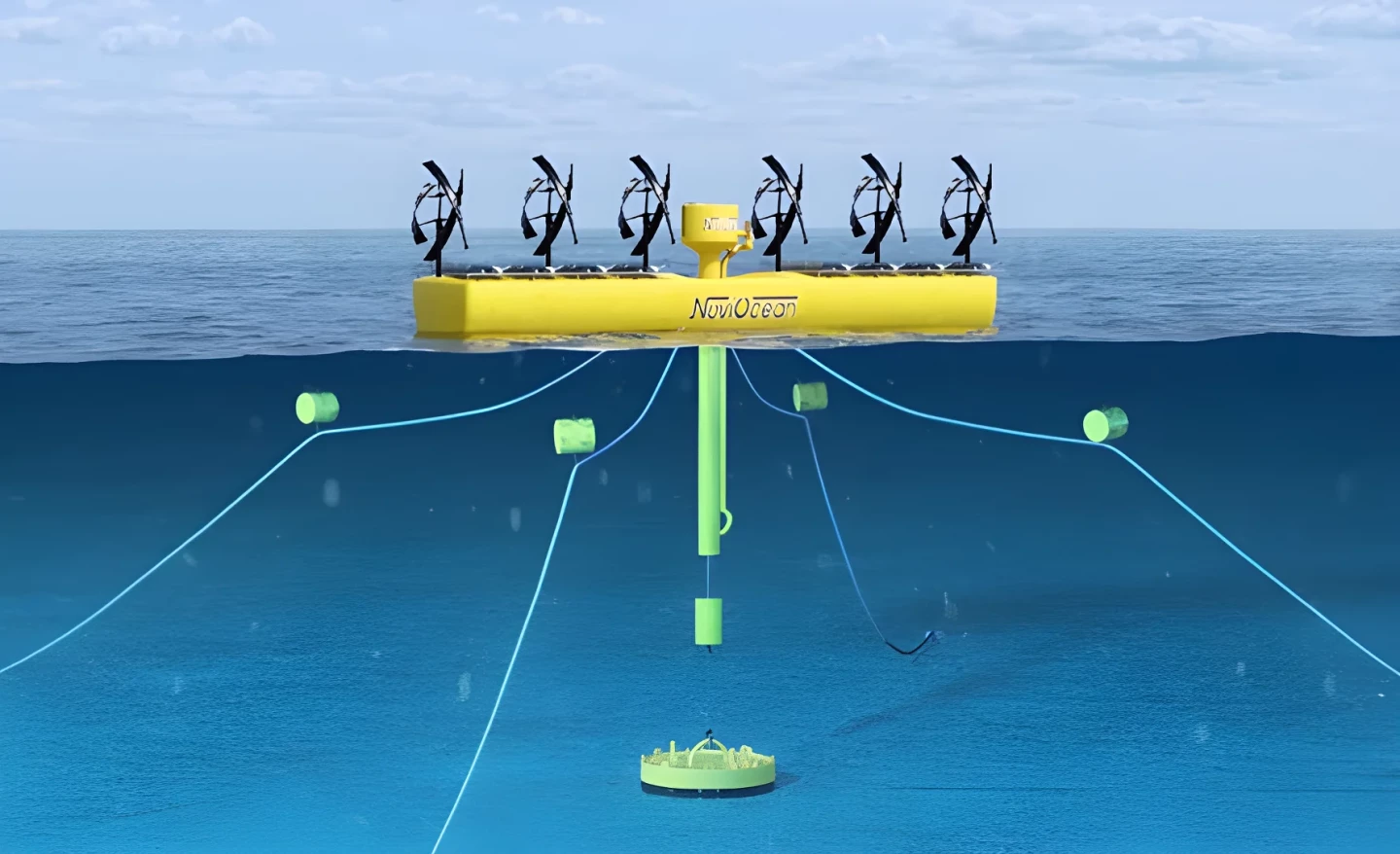
But the "but" to answer these "buts" is this: the world needs to vastly increase its renewable energy generation in the coming decades – not just to replace our epic current levels of energy consumption, but to service the impending electrification of ground, sea and air transport, as well as the country-sized appetite of crypto-mining and the rise of AI, which appears to have a virtually bottomless appetite for electricity.
And by moving away from fossil fuels, which can easily be ramped up and down to meet a grid's demand curve, fully clean energy grids will need to diversify generation sources so they're not caught with their pants down when the Sun's not shining and the wind's not blowing.
Sources like wave energy could well have an outsized value in this context. We wish NoviOcean well in its efforts, and hope this project moves substantially faster than others in the wave power business, which seems to be gaining some notoriety for its long and burgeoning timelines.
Source: NoviOcean











